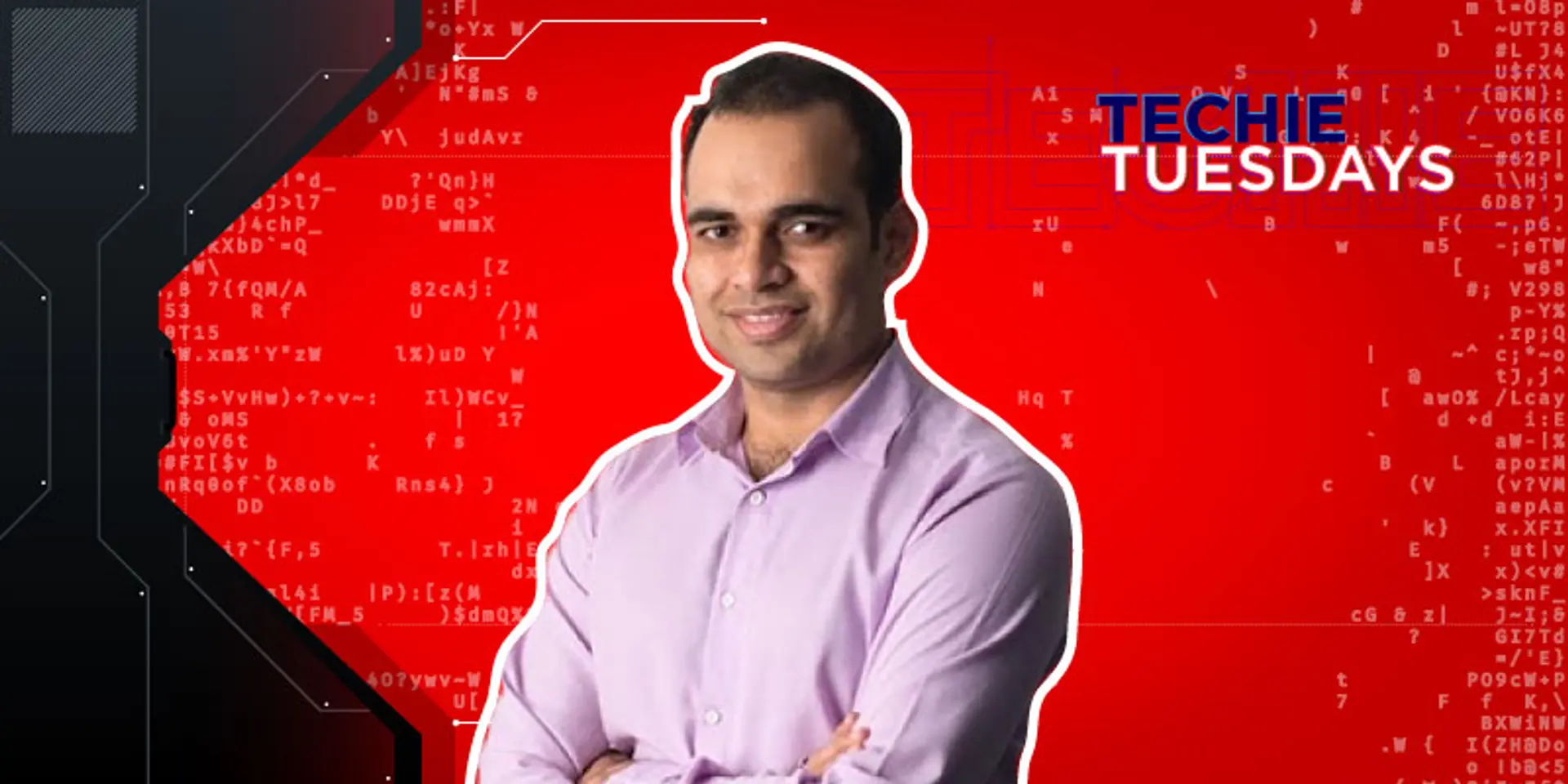Meet Ajay Shrivastava - the tech general behind culture and technology at Oyo and Knowlarity
Our Techie Tuesdays candidate this week, Ajay Shrivastava is the man who built technology at Oyo from scratch. An entrepreneur, hustler and an armyman at heart, Ajay’s enthusiasm is infectious. Because of his distinctive management style, he has been the culture head at Oyo and Knowlarity.
When Ajay Shrivastava met Ritesh Agarwal, Oyo was still operating out of a two-room office with a leaking roof, and the bookings were still being done on phone. Fast-forward one month, and the company had its first hotel booking via its website. Fast-forward another month, and Oyo had its app in the market and another app for providers (property managers, hotel owners, Oyo sales force on ground and other team members). Fast forward 12 months, and Oyo had come to have 5,000+ hotels across 170 cities (against its target of 300 hotels) on its platform and raised $200 million. All this, primarily driven by technology. And the man who made all this happen was Ajay, our Techie Tuesdays' protagonist this week.
Ajay’s approach towards problems, his solutions and his management style, are all unique and efficient. As a child he wanted to join the Indian Army, and even though he could not make it to the army, he brought the instincts of an army general to his work. YourStory sat down with Ajay, who recently joined as CTO at the cloud telephony startup Knowlarity, to know more about his story and his tryst with technology.
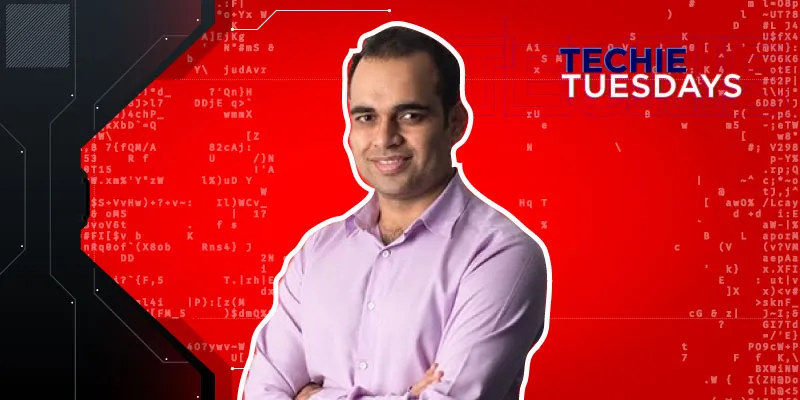
Of childhood and dreams of joining army
Ajay was born in Gazipur, near Varanasi (Uttar Pradesh). His father, a graduate from IIT BHU, was employed with Birla Cement factory in Satna (Madhya Pradesh). As a child Ajay was a true all-rounder, excelling in sports, extra curricular activies and, of course, studies. He recalls,
I used to think in 9th and 10th that the kind of talent I have, the only job that will do justice to me is army. There you have to be intelligent and also be a sportsperson. So, I should become an army officer.

After his 12th, when everybody around him was thinking doing engineering, he was thinking of joining the army, and prepared for the NDA exam. He cleared the written exam and but could not pass the SSB round. It came as a big jolt to him since he believed nobody could reject him.
An engineering student giving NDA attempts

Ajay’s father persuaded him to write the entrance examination for engineering colleges even if he didn’t wish to join one. He got through the UP state engineering entrance examination, and had to be pushed to take admission in an engineering college, as he was still keen to join the army. Since he had passed his 12th from a different state (Madhya Pradesh), he didn’t have many options even after getting a good grade. Eventually, Ajay joined state-level government college IET. He says,
“For me these things didn't matter as I didn't want to stay there.”
He applied for NDA after six months and was rejected again. Today, Ajay thinks that joining the army was not in his destiny as he did not have the discipline that is required in the army. He says even in school and college, he used to have poor attendance but managed to score good marks. His college once even sent a letter to his parents informing them about his low attendance record.
Thinking tech, thinking engineering
Somewhere in his third year, Ajay realised that this (technology) was his destiny. He says, “I realised that in this college I won’t be able to do much. If at all I want to become an engineer let me fight it out a bit.”
He then joined IIIT Bangalore. According to Ajay, his mindset changed at IIIT and he started thinking about getting into the best tech company in the world. However, Ajay’s struggle with discipline continued and he kept missing classes. One night he even slept in the classroom because he feared that he won’t be able to come back if he went home.
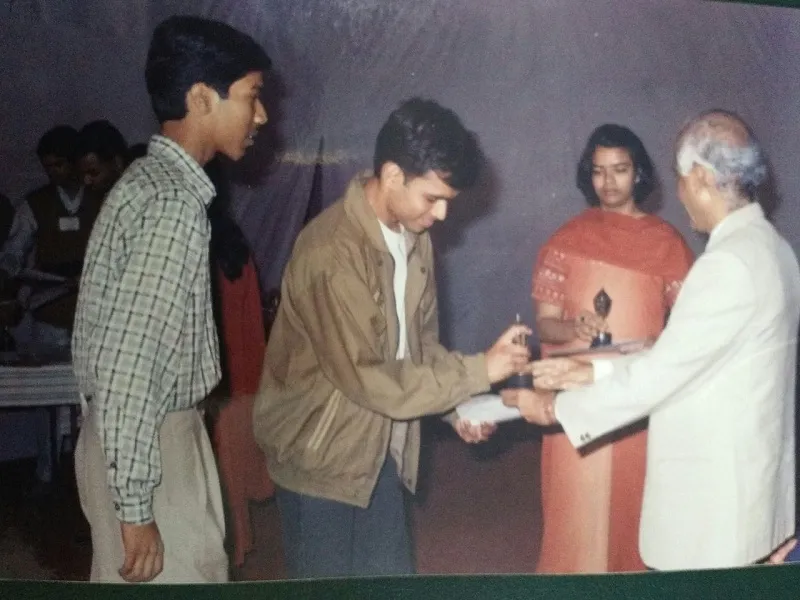
He scored more than 80 percent in the final exam. Ajay recalls,
The good thing was that the big companies from the US which were setting shop here were more interested in your logic and problem-solving skills than whether you have read the books or not. It doesn't matter when you come and go as long as you work.
Ajay joined Intel after graduation.
Related read - How a small-town commerce graduate became CTO of a multibillion-dollar company
Intel–a perfect match and a mismatch
At Intel, Ajay worked on the much-hyped Whitefield chip, a next-gen Xeon processor for servers that drew its name from Bangalore's IT hotspot. It was an ambitious project and the majority of engineers in India were validation engineers (testing equivalent in the hardware world). Ajay’s team was in the US which worked out in his favour as he liked working during the night. He says,
I felt that this (job) was a god-send for me. How else is it possible to find a company that works at night, offers you flexi timing, let’s you work in cutting-edge technology and pays you well?
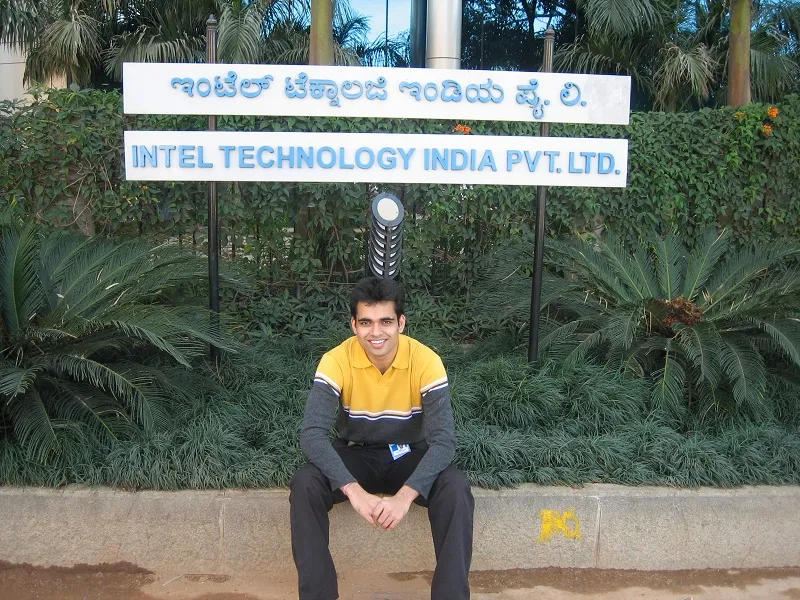
Ajay was sent to the US for five to six months. It was an experience which he’ll remember for life --it was exciting and culturally shocking at the same time. While in India, Ajay’s expectations from Intel had risen very high because of the way Intel treated him and other employees. When he went to the US, he expected the similar treatment, which was at odds with the DIY philosophy there. He expected to be put in hotels whereas the arrangements had been made in service apartments without any amenities. It took him some time to get used to that lifestyle. But soon he met the worst accident of his life.
Thanks to the systems
Ajay learnt driving in the US and bought a car. One day, he decided to drive to to a restaurant. As he approached the restaurant parking, he accidentally pressed the accelerator instead of the break. He lost control due to sudden acceleration, and his car swerved towards the lobby, missing by a whisker the glass panels separating the restaurant from the parking, and scraping a few other vehicles in the process. It was a close miss as there were at least 20 people sitting across the glass panels.
The police arrived and checked if Ajay was drunk. He was in shock and but at the same time he was relieved to see that people whose vehicles he had damaged were not too perturbed. They all had car insurance. Ajay realised how structured things were in the US then. He made it a point to drive very carefully after that incident.
At Intel, Ajay worked on C, C++, Perl, MS SQL Server, Windows, Linux.
Also read - How a marketing and sales person ended up as a digital czar—Ashish Gupta’s story
From a black and white world to a colorful world
After coming back to India Ajay got married. He joined Adobe, Noida, to be closer to his family. Incidentally, he didn't think very highly of Adobe and saw it as a compromise on his part (as compared to Intel). He soon realised that wasn't the case. He worked on the Illustrator and Photoshop product. He recalls,
While I worked on black and white screen at Intel, Adobe Photoshop and Illustrator was colourful world. Adobe has a policy of writing developer's name in the software, which was also encouraging. My name appears in Photoshop.
Ajay developed features and effects for Illustrator. He worked on improving its performance to begin with (for CS2). With the help of delay loading, custom implementation and other techniques, he (along with his team) brought down the launch time from almost 1 min to 10 seconds. He developed isolation mode from scratch and worked on general filter performance. For this, Ajay dealt with C++ on Windows, Macintosh.
With the launch of iPhone, Ajay wanted to work on mobile technology. So, he went up to Photoshop head Shanmugam Natarajan and told him that he wanted to work on the Photoshop mobile app. It wasn't a priority at that time as the app was free. After a month, he started working on the app. The initial version of the Photoshop app (called Photoshop Mobile) was build from scratch by Ajay and one more person. Now it's called Photoshop Express and boasts of more than 50 million downloads. He used Java on Android Mobile for the development of the app.
By now, Ajay started realising that mobile was just a client, and the the real magic lay on the web where there's scalability. That’s when he left Adobe to join Microsoft, Hyderabad.

Mobile to web app
Ajay joined the Dynamics CRM team of Microsoft. That was the first time he worked on web apps. Database, middle-ware, front end (HTML CSS), they were all new for him. Till now (2010), Microsoft was following a strategy that all their apps (including Dynamic CRM) will run only on Internet Explorer (IE). Ajay says,
It wasn't a great strategy at that time when other browsers were ahead of IE. So, Microsoft decided to make Dynamic CRM and other apps offer cross browser support. It was like changing the carpet as a decade of coding in it was specific to IE. Everything had to be reviewed and changed to make it compliant with the standards.
Ajay led that project.
Rocket Singh inside Microsoft Campus
At Microsoft, Ajay had some free time in his hand. The startup world was beginning to heat up then. He got an idea to start up. There was a group in Microsoft called Hyd Chat where almost 4,000 people used to share their plans to buy electronics like TV set, etc. and if there were more people interested in buying a product, then they negotiated the deals. Ajay recalls, “Flipkart and Snapdeal were not as popular then, so online marketplaces weren't offering products at the cheapest rates.”
However Ajay wasn’t sure if Microsoft would allow its employees to start up. When he came to know that the company allowed an employee to start up as long as it did not impacting his work and commitment, it was not very long that Offers4Groups.com came into existence.
Ajay wanted the discussions and negotiations which were happening on Hyd Chat to take place on Offers4Groups.com with the participation of people from across the country. It was different from Groupon as the grouping wasn't hidden on Offers4groups platform. Ajay started working on it during the nights.
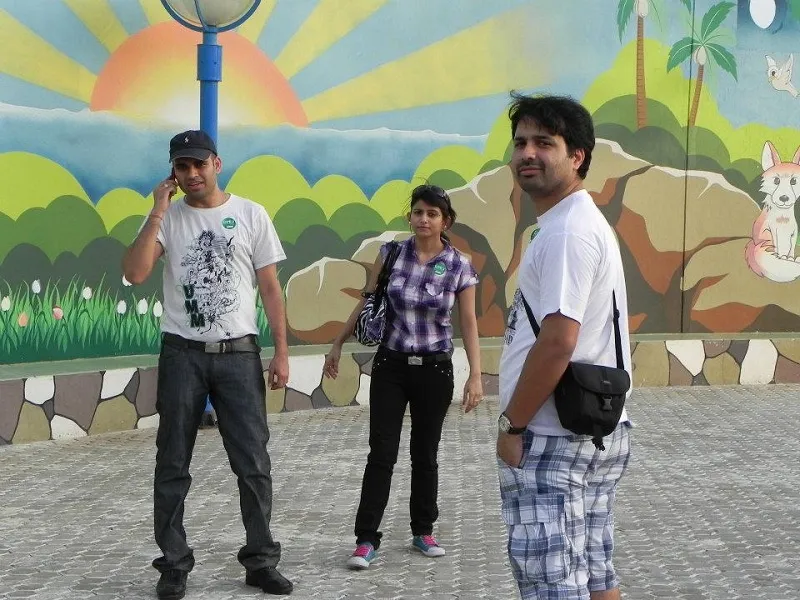
In the beginning, Ajay only made groups and posted the deals. There were two more people working on this. They didn't tell anyone in the Hyd Chat group that Offers4Groups.com was a startup by them. They simply posted messages such as this in the group: 'Bought this LED TV from this cool website, got a good discount'. Ajay adds, “This was taken as validation as it was coming from an internal person. We also used to mention the pricing on Flipkart and Snapdeal against our own offering which used to be the best deal.”
You may also like - The untold story of Orkut Büyükkökten—the man who built world’s largest social network before Mark Zuckerberg
Poor man’s CRM
Ajay bought a phone and a SIM where people could call (as he couldn’t disclose his identity). He made his phone poor man's CRM by saving phone numbers of people with the product they wanted to buy (for example i20 Raghu). This way when they called he knew what they wanted. Ajay still has these contacts saved on his phone.
Ajay tried striking deals for houses and cars in the beginning but it didn't work out well; electronics did. He used to go to physical stores and negotiate deals with the shopkeepers. He was treated like any other salesperson, and had to wait for hours to get five minutes of time from these store-owners. He recalls,
When rubber hits the road, you come to realise that everything inside the large companies is an illusion. I think the culture in big companies is built in a way that makes you feel great about yourself or your work (which is an illusion).
Ajay thought his startup model was the best as he was making money by merely facilitating the deals. Then came 2012 when the funding era dawned in Indian e-commerce. Of the numerous startups which were impacted by funding, one was Offers4Groups.com. Ajay says, “Our model broke as we weren't offering the best deals anymore. Somewhere I know that our model will return and revive some day. The idea still holds water. Group buying will make sense again.”
In the meanwhile, cross-browser CRM came to be built at Microsoft following which Ajay decided to go back to Delhi. During his stint at Micrososft, he worked on C#, ASP.NET, Javascript, HTML, CSS, and SQL Server on Windows Server.
Hyd Chat group never came to know about the people behind Offers4Groups.com.
Back to home
It was a coincidence that Expedia wanted to start its engineering centre in Gurgaon then. Egencia (part of Expedia) CTO was in Seattle and he was looking for someone to help him start the centre. Ajay met him in Hyderabad and was asked to build the Egencia team in Gurgaon. He built the rail system (booking via Expedia) at Egencia for UK (called UK Rail) using Java, J2EE, Web Services, Spring MVC, Tapestry, Javascript, HTML, CSS. Even though he liked the work and building the team, he was keen to work in a startup.

(Re) Entry to the startup universe
Ajay met Amit Ranjan, Co-founder of SlideShare who was then looking for a technology leader for SlideShare. The experience of having worked in large companies helped Ajay at SlideShare.
He started by building the right culture in the company. He says,
This is something to be learnt from the big companies where thousands of people march in the same direction whereas in a startup, even 50 people find it difficult to work without clashes.
He created team principles for SlideShare which made sure that the company (debate, discuss and then) marched like an army, with its aggression and well-oiled execution.
The company started looking at execution (sprint/bugs/tasks) metrics on a daily basis. During his time at SlideShare, Ajay took care of company's distribution and conversion--the core engine of SlideShare. SlideShare's main traffic was from SEO, so the tech team’s job was to make sure that SideShare figured at the top of all search results, and to improve that further. Ajay and his team worked on performance optimisation, virality loops and search engine optimisation. The work on the core engine ensured that the images and presentations were getting uploaded (and consumed) smoothly.
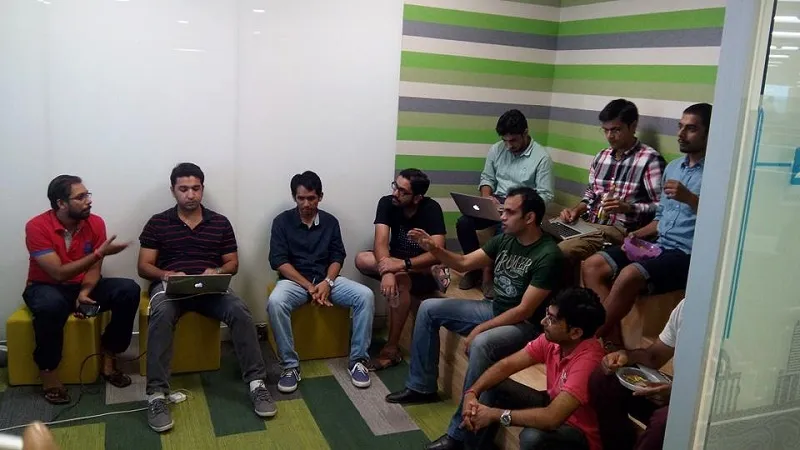
Ajay used to say after Linkedin’s acquisition of SlideShare– “We're a pirate ship funded by the Navy.”
Ajay’s biggest learnings from the SlideShare journey were to be fearless, move fast, fail fast and fix fast. Pace is the key in a startup.
After Amit Ranjan left SlideShare, Ajay also decided to move on. He spoke to PepperTap, Grofers, Oyo and other startups. He says, “I felt that I knew the rules of the game, I could make things happen.”
Also read - Amit Ranjan—the entrepreneur who crossed the startup-government chasm
The Oyo story–from 50 to 3,000
Ajay recalls his meeting with Ritesh Agarwal, founder of Oyo, in a two-room office with leaking roofs and people cramped in there. It was a contrast for him coming as he did from LinkedIn. He liked the chaos. He says, “Even though Ritesh was 21-22 years old, talking to him felt like talking to a 40-50 year old person. He had that kind of maturity and was handling a high level of chaos.”
Ajay found the Oyo model and Ritesh's vision very impressive. Ritesh wanted to offer standardisation to the customers opting for accommodation in the Rs 800-1,000 range. It was a massive problem to solve. Ajay adds,
It was like Uber of hotels as we were trying to improve the experience of stay/accommodation (similar to what Uber did to commute). It was better for both the service provider (driver and hotelier) and the user (customer), with an app for standardisation of experience. Uber owns the experience even though it doesn't own the car. People are keeping the car clean and behaving well because the technology is watching. Similarly, we wanted to own the experience in the hotels and accommodation segment.
Ajay joined Oyo in February 2015. He worked on the website and Oyo’s first online booking took place in March 2015. On Ajay’s birthday, 21st April, Oyo launched its app. The company eventually automated many things on the service provider side: they built the owner app, the call centre app, the property manger app and the cluster manager app. They worked on automation of reconciliation, marketing and finance. Everything was ready by June 2015. Ajay says, "Every player in the system now had technology in his/her hand and all the data was going to a centralised database. This helped a lot in decision making. We were well poised for growth."
July 2015 onward, Oyo grew exponentially, driven by technology and automation. At the beginning of 2015, Ritesh had given himself the target of reaching 300 hotels by the end of the year. The company ended 2015 with 5,000 hotels across 170 cities. Ajay witnessed the company growing from a 50-member team to 3,000-member strong.
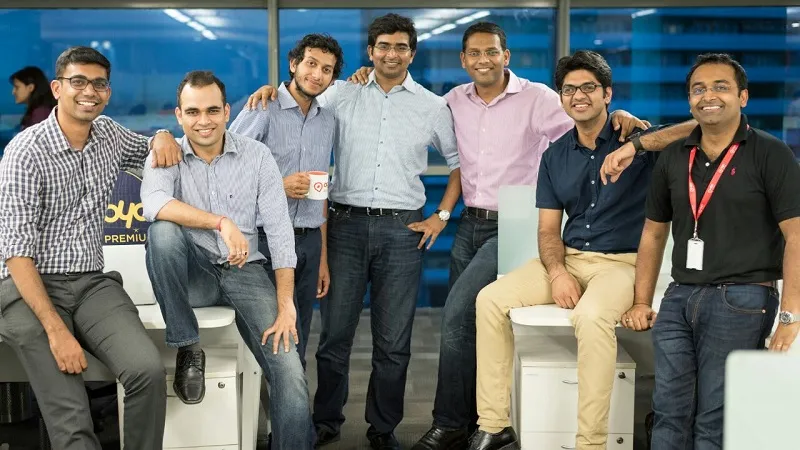
Oyo’s growth was fuelled a lot by funding. The company raised an undisclosed Series B funding in 2015 followed by a massive $200 million in 2016.
Learning from Oyo and SlideShare
Based on his learnings at Oyo and Slideshare, Ajay came up with a few ideas which he believed in and which had worked for him. He had written blogs on all of them:
- Solver team--Hyper agile and well-oiled execution: As soon as a company reaches the magic number of 20 people, internal clashes increase and as the number grows further it slows down the company even more. It's like 4 wheels of car moving fast but in different directions. Agile methodologies just increase the frequency of issues and don't resolve them. That's why I came up with the solver team concept.
- Seeding and growing technologies.
- Minimum Viable Technology (MVT) - Move fast and keep shipping.
Ajay calls himself a tech general and even thought of giving designations to people at Oyo along the army lines. His management style is summed up as 'Discussion of a democracy and execution of a dictatorship'.
Ajay feels that technology is a tool like a language and it’s the thought and logic behind it which are important.
Operations heavy to tech heavy–Knowlarity CTO
After Oyo, Ajay was looking for a company that sold technology. On meeting Ambarish, he felt Knowlarity was one such company.
By now, given his experience of having worked in companies ranging from small startups to big corporates, Ajay could tell which strategy would work at which stage.
Stability, scaling of platform and team execution were the main challenges at Knowlarity. He implemented the solver team first. Ajay says, “I believe in using people to their strengths. I realigned the tech team where some managers became individual contributors and vice-versa.”
Introducing Bug Jail and more
Ajay assured the team that all the problems will be solved in three months. Nobody believed him. He asked everyone to share all the bugs/issues. He created the concept of bug jail. This required the entire tech team to stay in bug jail and prohibited any feature development until they made the bug count zero. In total, 1,500 bugs were filed and the team killed them all in a month. Ajay says,
I read a quote somewhere that the bitterness of bad quality remains long after the sweetness of lower costs. Similarly, in the tech development world, bitterness of poor quality remains far longer than the sweetness of faster delivery.
Soon, the tech team became the best performing unit at Knowlarity and Ambarish asked Ajay to share the best practices of his team with the other sections. He created some execution principles (on the lines of team principles at SlideShare).

Innovation @Knowlarity
Ajay and his team worked on the following innovation in the last three months at Knowlarity:
- Automated speech recognition: This will help generate a report on what people (customers and customer care executives) have talked.
- It gives information in the form of a word cloud where the size of the word is directly proportional to the frequency of its usage in conversations. The company is using automated speech recognition AI for this.
- This also enables searchable voice where one can look for specific words among the customer call recordings. Ajay says, “We're converting voice to text in the backend and keeping it indexed for us. We have an abstraction engine that uses multiple AI engines. They can capture Indian accent and even local languages.”
- Text to speech (TTS): Personalised automated calls. It helps you make a personalised automated call (to an extent only human can reach/speak). The information can be picked up by databases based on customer behaviour/actions.
- Voice based IVRs: The IVR experience is very inconvenient at the moment as the customers have to keep on removing the phone from their ears to see the screen and type their choice(s). It was fine for landline when the receiver and the box were separate. In voice-based IVRs, ASR converts your voice to text; it'll then run the query and then proceed. It also has the provision to route any complex query to the agent. It can reduce the need of agents (call centre executives) drastically.
- Big data analytics: The company has also introduced real-time analytics which shows trends and analysis. It'll alert the company if the system numbers cross the threshold limit.
All the above features/tools will be live this month on Knowlarity.
On team building and beliefs
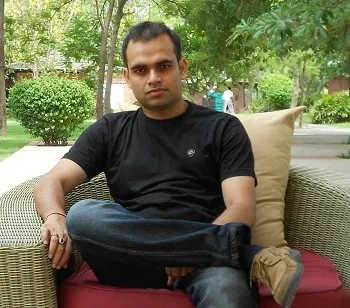
Ajay has built and grown teams at Egencia, SlideShare, Oyo and Knowlarity. Besides basic intellect and aptitude, he looks for people who are more resourceful and enterprising. He believes that such people are the ones who take the team to the next orbit. He says,
People often take tough interviews and hire smart engineers, and then ask them to not think. All of a sudden, you're not utilising the compute power of a large part of your workforce. I believe in utilising this compute power. In solver team, engineers are involved from the beginning. He/she gives thoughts on design, product, business stages.
According to Ajay, if everything that one is doing is important and urgent, then it means that one did not do it at the right time. He adds, “It's failure of leadership and management if your majority of the work is urgent and important.”
Ajay works on a 80:20 rule ie pick that part of a task where 20 percent work will give you results for 80 percent of the task. Some of the principles he believes in are as follows:
- Get shit done. It doesn't matter what efforts you have put in. It's either done or not done. You don't get an award to take the ball to the goalpost, but only when you hit the goal.
- First make it work, then make it better.
- In the team communication, prefer face-to-face interaction over calls over messages over mails.
He believes in this saying of Mozart: The shorter way to do many things is to do only one thing at a time.
Ajay believes that authenticity and result-oriented execution defines him. He says,
What I say is what I do is what I write/share.
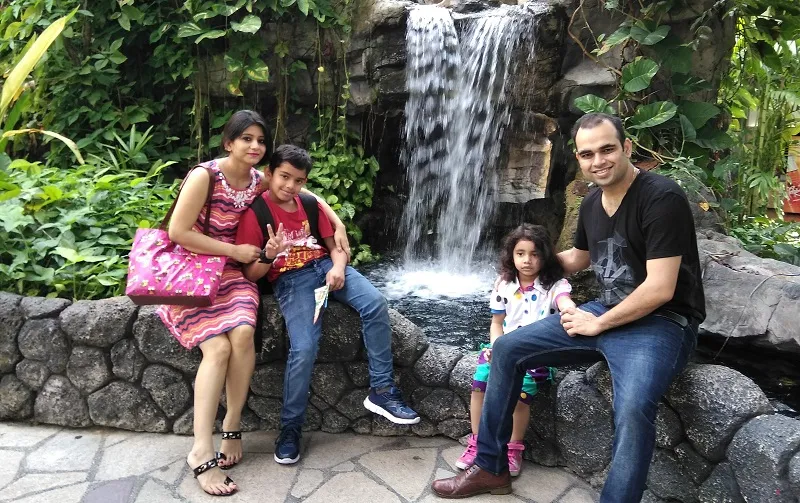
Interestingly, Ajay has given some thought on becoming a politician. He says, “Sometimes I think of becoming a politician because the world needs more result-oriented and no-bullshit politicians.”
But there’s time for that. For now, he’s busy building Knowlarity.
You can follow him on Twitter or connect with him on LinkedIn.
Fun fact - Ajay deployed Knowlarity at Oyo and rejected the product out because of poor technology.
[Update - the article has been updated on claims (and/or facts) based on the feedback received from some of the companies mentioned in the article.]


